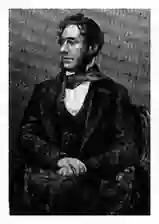The Number of Ragged Schools In London during the Early Years of the Ragged Schools Union
The first list of ragged schools in London in the records of the Ragged Schools Union is that put before a meeting on July 5th, 1844:

Mr. Locke reported that he had written to Mr. Ainslie and seen him as to the list of ragged schools and that he had obtained one but found it imperfect and that the following was as near as he could come to correctness.
Lambeth Marsh; Turville School, Shoreditch; Shoreditch Road School; Albany School, Regent’s Park; Oxford Buildings, Oxford Street; Wells School, ditto; Surrey Road; Pye School, Westminster; Field Lane West School, Smithfield; Smith’s Buildings, Islington; St. Giles, Streatham; Cow Cross, Spitalfields; Grey’s Yard, James Street, Walworth; Norfolk Place, Curtain Road.
Mr. Ainslie was employed by the London City Mission and it is possible that he gave Mr. Locke the names of those schools specifically connected with the Mission’s work. The additions made by Mr. Locke may have included some which he knew which were not connected with the Mission. However, Mr. Locke did not claim that hia list was final. It my be taken as indicating the names of the established ragged schools at the time.
At the Third Annual Meeting of the Ragged Schools Union, Lord Shaftesbury gave the following figures. The number of ragged schools was 44 and the average number of children attending them was 4776, for whom there were 450 teachers. 16 of the schools were open daily (morning and afternoon) , 31 were open from 3-5 evenings a week, and 33 were open only on a Sunday. This gave a total of 80 schools conducted in 44 buildings.[1. The Ragged School Union, Minute Book, 1847, May 18th.] Of these 44 schools, 22 received some help from the Ragged Schools Union.[2. Ibid., Account of General Fund, June, 1846 – May, 1847.]
Appendix 2: Grants made to Schools by the R. S. U., 1846 – 1847.
The first complete list of the grants made to the ragged schools in London by the R. S. U. is given in the Account of the General Fund, June, 1846 – May, 1847.

Listed Bibliography of References:
1. The Ragged School Union, Minute Book, 1847, May 18th.
2. Ibid., Account of General Fund, June, 1846 – May, 1847.
This is the work of D.H. Webster who wrote a thesis submitted for the degree of Doctor of Philosophy of the University of Leicester, 1973. It remains an important historical document and analysis of the Ragged School and free education movement in Britain. It will be reproduced and published verbatim in instalments for educational purposes to facilitate review and discussion about education. This post is the first part of section one of the thesis where the references have been reproduced inline within the text.
You can see the thesis overview and contents here:
The Ragged School Movement and the Education of the Poor in the Nineteenth Century
